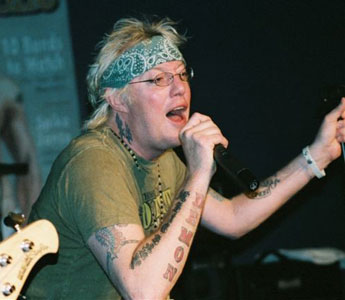Birthday Celebrated
Friday, August 19, 2011
pierre de fermat pictures
Thursday, August 18, 2011
Wednesday, August 17, 2011
Pierre de Fermat Biodata
Birthplace: Beaumont-de-Lomagne, France
Died: 12-Jan-1665
Location of death: Castres, France
Cause of death: unspecified
Gender: Male
Race or Ethnicity: White
Occupation: Mathematician
Nationality: France
Executive summary: Fermat's Last Theorem
French mathematician, born on the 17th of August 1601, at Beaumont-de-Lomagne near Montauban. While still young, he, along with Blaise Pascal, made some discoveries in regard to the properties of numbers, on which he afterwards built his method of calculating probabilities. He discovered a simpler method of quadrating parabolas than that of Archimedes, and a method of finding the greatest and the smallest ordinates of curved lines analogous to that of the then unknown differential calculus. His great work De Maximis et Minimis brought him into conflict with René Descartes, but the dispute was chiefly due to a want of explicitness in the statement of Fermat. His brilliant research entitled him to rank as the founder of the modern number theory. They originally took the form of marginal notes in a copy of Bachet's Diophantus, and were published in 1670 by his son Samuel, who incorporated them in a new edition of this Greek writer. Other theorems were published in his Opera Varia, and in John Wallis's Commercium Epistolicum (1658). He died in the belief that he had found a relation which every prime number must satisfy, namely 2^(2n) + I = a prime. This was afterwards disproved by Leonhard Euler for the case when n = 5. Fermat's Theorem, if p is prime and a is prime to p then a^(p-1)- I is divisible by p, was first given in a letter of 1640. Fermat's Problem, or more commonly, Fermat's Last Theorem is that x^n + y^n = z^n is impossible for integral values of x, y and z when n is greater than 2.
Fermat was for some time councillor for the parliament of Toulouse, and in the discharge of the duties of that office he was distinguished both for legal knowledge and for strict integrity of conduct. Though the sciences were the principal objects of his private studies, he was also an accomplished general scholar and an excellent linguist. He died at Toulouse on the 12th of January 1665. He left a son, Samuel de Fermat (1630-1690) who published translations of several Greek authors and wrote certain books on law in addition to editing his father's works.
The Opera Mathematica of Fermat were published at Toulouse, in two folio volumes, 1670 and 1679. The first contains the "Arithmetic of Diophantus", with notes and additions. The second includes a "Method for the Quadrature of Parabolas", and a treatise "on Maxima and Minima, on Tangents, and on Centers of Gravity" containing the same solutions of a variety of problems as were afterwards incorporated into the more extensive method of fluxions by Isaac Newton and Gottfried Leibniz. In the same volume are treatises on "Geometric Loci, or Spherical Tangencies", and on the "Rectification of Curves", besides a restoration of "Apollonius's Plane Loci", together with the author's correspondence addressed to Descartes, Pascal, Roberval, Huygens and others. The Oeuvres of Fermat have been re-edited by P. Tannery and C. Henry (Paris, 1891-94).
Singer Hollywood Dead 47 |PhotosPictures|Image













Pierre de Fermat is the patron saint of unfinished business
IN PICTURES: Google Doodles you'll never see
In other words, an + bn can never equal cn , as long as a, b, and c are positive integers and as long as n is greater than two.
Go ahead and plug in some numbers for a, b, c, and n, and you'll see that they don't add up (or just take our word for it). But it turns out that coming up with a mathematical theorem proving it for every integer greater than two is really, really, really hard.
Even though he lived for another 28 years, Fermat never got around to sharing his "truly marvelous proof" with anyone, as far as we know.
Subsequent generations of mathematicians chipped away at it. Fermat himself had inadvertently proved it for n = 4, in his only surviving mathematical proof. By the beginning of the 19th century, it had been proven for n = 3, n = 5, and n = 7, but a general proof was nowhere in sight. In 1815, the great French mathematician Sophie Germain proved it for a special class of prime numbers now called Sophie Germain primes, which opened the door to further proofs.
By 1993, Fermat's Last Theorem had been solved for all prime numbers less than four million, but the universal proof remained elusive. For many years, Fermat's conjecture held a spot in the Guinness Book of World Records as the World's Most Difficult Math Problem.
It was finally solved in 1994 by British mathematician Andrew Wiles, whose proof took seven years to complete and ran over 100 pages. Wiles, who was knighted for his efforts, deployed advanced algebraic geometry that was not available to anyone in the 17th century, suggesting that Fermat took a different approach in his unpublished proof. That or he was completely full of it.
Still, if Fermat had somehow managed to publish his proof during his lifetime, he would probably not be nearly as famous as he is today. So the next time someone asks you about the dishes in the sink, the half-written novel in the desk drawer, or that '67 Camaro sitting on blocks on your lawn, simply think of Fermat, and respond that you have a truly marvelous plan to finish your project, but that the day is too narrow to contain it.
French mathematician Pierre de Fermat jotted a cryptic conjecture in the margins of a textbook. On Fermat's birthday Google celebrates Fermat's Last Theorem, which managed to drive mathematicians bonkers for the next four centuries.
Dead at 47 Warrant Singer Jani Lane
Warrant is an American glam metal band from Hollywood, California. Jani Lane, the former lead singer of the term rock metal band, died in Los Angeles. He was 47th
Officer Sara wire, said the body was found Thursday in a hotel Lane Woodland Hills. She had no immediate information about the cause or circumstances of his death.
With his long blond hair and tight leather outfits, Lane is the excess of the 1980s band “hair metal” rock. He joined Warrant in 1984 and wrote hits like “Heaven,” “Down Boys” and “Cherry Pie”.
He had a relationship on and off with the group, so that in 1992, before returning and stopping several times.
last years, he appeared in VH1′s “Celebrity Fit Club” and made headlines for arrest drunk driving.
He is survived by two daughters from two previous marriages.
Jani Lane Killed
Ex-Warrant singer Jani Lane's body was found beside a bottle of vodka and prescription medication, California police have said – leading Sebastian Bach to reflect: "His only real friend killed him in the end."
An autopsy on the 47-year-old was inconclusive following his death on Thursday in a Comfort Inn motel. Former bandmates and other musicians have paid tribute to Lane while his manager, Obi Steinman, says: "I lost a very dear friend. His family, including his young children, asks for privacy during this difficult time."

Bach, ex of Skid Row, says Lane's tragic end is "all too typical of what a rock musician’s life actually is."
He comments: "It's a life marked by extremes. Extreme attention from people you don't know while the work and travel take you away from those you do know."
"Playing to thousands of people then going back to your hotel room and shutting the door. When the door shuts the quiet is the exact opposite of the volume of the concert. The solitude of the room becomes the parallel of the adulation of strangers."
"For some, the bottle of vodka or whatever becomes a friend that's always there for you while others come and go. I've felt those emotions myself."
Bach says it's another reminder to share fond words with people you care about – while you still can. "I guarantee Jani would not have anticipated everyone coming out of the woodwork extolling his life and times", the singer continues. "Which is why he probably died alone in a hotel room with his only real friend."

His cause of death cannot be confirmed until toxicology reports are completed, which may take up to eight weeks. In the meantime investigators suspect accidental overdose or possibly natural causes.
The family of Lane, real name John Kennedy Oswald, have gathered today for a private memorial service. His sister Vicky Oswald-Ley says: "Alcoholism is something he fought every day – and it just won."
"There were no drugs; that was one thing he could not tolerate. But he'd get clean and sober then fall off the wagon."

"He was talented and witty and bright – but he shut his siblings out, and I know that's because he was ashamed of his drinking. There wasn't a day when one of us didn't try to contact him."
But she hasn't yet heard from Lane's wife. "We have so many questions and don't know where to turn for answers", she says. "Why was he in a hotel? Why was he away from his wife? Why was there isolation?"
An autopsy on the 47-year-old was inconclusive following his death on Thursday in a Comfort Inn motel. Former bandmates and other musicians have paid tribute to Lane while his manager, Obi Steinman, says: "I lost a very dear friend. His family, including his young children, asks for privacy during this difficult time."
Bach, ex of Skid Row, says Lane's tragic end is "all too typical of what a rock musician’s life actually is."
He comments: "It's a life marked by extremes. Extreme attention from people you don't know while the work and travel take you away from those you do know."
"Playing to thousands of people then going back to your hotel room and shutting the door. When the door shuts the quiet is the exact opposite of the volume of the concert. The solitude of the room becomes the parallel of the adulation of strangers."
"For some, the bottle of vodka or whatever becomes a friend that's always there for you while others come and go. I've felt those emotions myself."
Bach says it's another reminder to share fond words with people you care about – while you still can. "I guarantee Jani would not have anticipated everyone coming out of the woodwork extolling his life and times", the singer continues. "Which is why he probably died alone in a hotel room with his only real friend."

His cause of death cannot be confirmed until toxicology reports are completed, which may take up to eight weeks. In the meantime investigators suspect accidental overdose or possibly natural causes.
The family of Lane, real name John Kennedy Oswald, have gathered today for a private memorial service. His sister Vicky Oswald-Ley says: "Alcoholism is something he fought every day – and it just won."
"There were no drugs; that was one thing he could not tolerate. But he'd get clean and sober then fall off the wagon."
"He was talented and witty and bright – but he shut his siblings out, and I know that's because he was ashamed of his drinking. There wasn't a day when one of us didn't try to contact him."
But she hasn't yet heard from Lane's wife. "We have so many questions and don't know where to turn for answers", she says. "Why was he in a hotel? Why was he away from his wife? Why was there isolation?"
Subscribe to:
Comments (Atom)